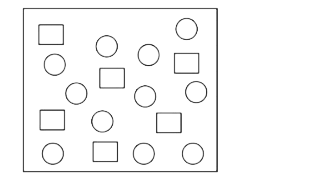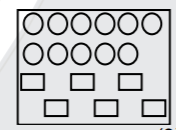
Initially the reactions in the container a&b are at equilibrium when the products & reactants are put together in a container C then at the equilibrium the total number of different compounds are-
(A) 5
(B) 7
(C) 6
(D) 8
The correct Answer is:D
N2NHD2H2NH2DD2HDNH3NO3⎫⎪ ⎪ ⎪ ⎪ ⎪ ⎪ ⎪⎬⎪ ⎪ ⎪ ⎪ ⎪ ⎪ ⎪⎭=8
Topper's Solved these Questions
- BOOK - RESONANCE ENGLISHCHAPTER - CHEMICAL EQUILIBRIUMEXERCISE - Exercise-2 (Part-1)28videos
CHEMICAL EQUILIBRIUM
- BOOK - RESONANCE ENGLISHCHAPTER - CHEMICAL EQUILIBRIUMEXERCISE - Exercise-2 (Part-2)22videos
CHEMICAL EQUILIBRIUM
- BOOK - RESONANCE ENGLISHCHAPTER - CHEMICAL EQUILIBRIUMEXERCISE - Exercise-1 (Part-1)38videos
CHEMICAL EQUILIBRIUM
- BOOK - RESONANCE ENGLISHCHAPTER - CHEMICAL BONDINGEXERCISE - ORGANIC CHEMISTRY(Fundamental Concept )6videos
CHEMICAL BONDING
- BOOK - RESONANCE ENGLISHCHAPTER - D & F-BLOCK ELEMENTS & THEIR IMPORTANT COMPOUNDS EXERCISE - Match the column1videos
D & F-BLOCK ELEMENTS & THEIR IMPORTANT COMPOUNDS
Similar Questions
Knowledge Check
- Question 1 - Select One
For the reaction a+b⇔c+d, initially concentrations of a and b are equal and at equilibrium the concentration of will be twice of that of a. What will be equilibrium constant for the reaction ?
A2B9C4D3
State true or false :
A state of equilibrium is reached when: the concentration of the products and reactants have reached constant valueView SolutionIf the value of equilibrium constant for a particular reaction is1.6×1012 , then art equilibrium the system will contain
View SolutionIn the figure shown below reactant A (represented by square) is in equilibrium with product B (represented by circle). The equilibrium constant is :
 View Solution
View SolutionA gas in container A is in thermal equilibrium with another gas in container B. Both contain equal masses of the two gases. Which of the following can be true ?
View SolutionIf a body A is in thermal equilibrium with three different bodies B, C and D then
View SolutionIf a body A is in thermal equilibrium with three different bodies B, C and D then
View SolutionIn which of the following reactions, the concentration of product is higher than the concentration of reactant at equilibrium? (K = equilibrium constant)
View Solution


